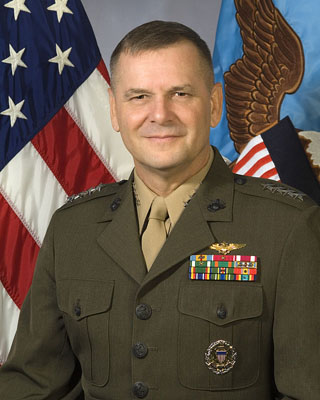John Hallam writing on Abolition Caucus highlights the content of a New York Times editorial opinion piece written jointly by Generals Cartwright and Dvyorkin saying that the Op Ed is incredibly important and timely. He adds that they have both said this kind of thing before, though not to his knowledge, together. Mr Hallem adds that this is the only bit of GOOD news he has seen for a long long time.
Pressenza quotes the following detailed article here, by David Wright, physicist & co-director, Global Security, from the Union of Concerned Scientists blog: For original see: http://blog.ucsusa.org/james-cartwright-vladimir-dvorkin-oped-707
In an important New York Times op-ed, retired U.S. and Russian Generals James Cartwright and Vladimir Dvorkin call for the two countries to take steps to reduce the risk of nuclear weapons being launched by mistake, particularly during a time of crisis.
In particular, they call for the two countries to jettison their Cold War nuclear plans that allow them to launch missiles on warning of an incoming attack. “Launch-on-warning” means what it sounds like: launching a nuclear strike based on data from warning sensors—satellites and ground radars—that indicate an incoming attack is underway. The president would have only 10-15 minutes after receiving warning to try to decide if the warning is accurate and whether to launch a nuclear strike in retaliation.
As the two generals write:
…these timelines are very compressed and the opportunities for ill-considered decisions very real. Launch-on-warning puts enormous strain on the nuclear chains of command in both countries.
In the past, the militaries in both countries have received erroneous information from early warning sensors or have misinterpreted warning data and mistakenly believed there was an attack underway. In fact, this has happened frequently enough to make it a serious concern.
The risks inherent to launch-on-warning are particularly high in a time of crisis between the countries, since leaders may be more likely to interpret ambiguous warning as real. The generals have a clear recommendation for the U.S. and Russia: End launch-on-warning
…to relieve the pressures to “use or lose” nuclear forces during a crisis and minimize the risk of a mistaken launch.
Take Missiles Off Hair-Trigger Alert
Maj. Gen. Dvorkin
Currently, to have the option of launching their missiles on warning, both the U.S. and Russia keep a large number of their nuclear missiles on “prompt-launch status,” commonly called hair-trigger alert. This status allows them to launch these missiles within minutes. A decision to end launch-on-warning is a dangerous relic of the Cold War and would mean there is no reason to keep missiles on hair-trigger alert.
Taking missiles off hair-trigger alert would eliminate the risk of launching an attack based on erroneous or misinterpreted warning. It would also essentially eliminate the risk of accidental or unauthorized launches.
UCS is urging President Obama to take missiles off hair-trigger alert in a particularly simple and effective way—by “safing” U.S. land-based missiles using a safety switch in the missile silos that is used to prevent a launch when maintenance workers are in the silo.
Some people argue that if you take missiles off alert, you run the risk that putting them back on alert during a crisis could result in a “re-alerting race” that could be destabilizing by further upping tensions. Even if this were true it misses the generals’ key point: they argue that the U.S. and Russia should not have their missile on hair-trigger alert, especially in a crisis, due to the high risks it presents.
Instead, the generals believe the threat of retaliation following an attack—not on warning of attack—is more than enough to deter an attack in the first place. They state that foreswearing launch-on-warning …would not destabilize nuclear deterrence: Both countries still have nuclear forces designed to withstand a first-strike attack, guaranteeing retaliatory strikes.
With no need to re-alert, there would be no re-alerting race.
Reducing Nuclear Risks
The generals’ warning is particularly relevant given current U.S.-Russian tensions. They note that: In periods of heightened tensions and reduced decision times, the likelihood of human and technical error in control systems increases. Launch-on-warning is a relic of Cold War strategy whose risk today far exceeds its value.
This is therefore the riskiest scenario, since provocations or malfunctions can trigger a global catastrophe.
There is no reason to accept the serious risks that U.S. and Russian launch-on-warning policies entail. Nor is there a reason to wait for Russia to reduce this risk; while it would be best if the two countries took these steps together, President Obama can make the U.S.—and the world—safer by taking the first step and removing U.S. land-based missiles from hair-trigger alert.
About the author: David Wright is a physicist and the co-director of the Global Security Program. He is a nationally known expert on the technical aspects of missile defense systems, missile proliferation, and space weapons.
Also see:
http://www.nytimes.com/2015/04/20/opinion/how-to-avert-a-nuclear-war.html?ref=international






